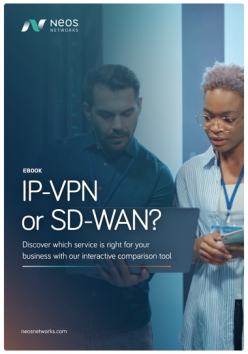What is IP-VPN?
IP-VPN stands for internet protocol virtual private network. These networks use a traffic routing protocol called multiprotocol label switching (MPLS) to direct data between destinations. It’s a safer, more reliable way for a firm’s various sites and offices to connect with each other, as it does not rely upon the public internet to route data between sites. It also enables the service provider of the network to offer quality of service (QoS) by prioritising data types.
What are the benefits of using IP-VPN for your business?
Aside from the security benefits of using an IP-VPN, this system has various other advantages for organisations. Since it’s based on MPLS, the network traffic can be monitored and managed for quality and efficiency, as well as usage.
What’s more, IP-VPNs give businesses the ability to adjust the network performance to meet business needs, pushing certain traffic to the front of the queue as required. It’s also possible to access – and learn from – historical reports on usage and bandwidth statistics.
IP-VPN pricing
Costs vary depending upon the service provider and options selected, just as they do for other types of connection. Prices can start from as little as a couple of hundred pounds per month, with discounts often available for longer term subscriptions.
Various factors affect price differences around the world. More competition drives prices down, while the lower the cost of routing IP traffic, the lower the costs passed on to the business using an IP-VPN. In the UK, businesses have both of these factors on their side, resulting in some of the lowest prices for IP-VPNs.












